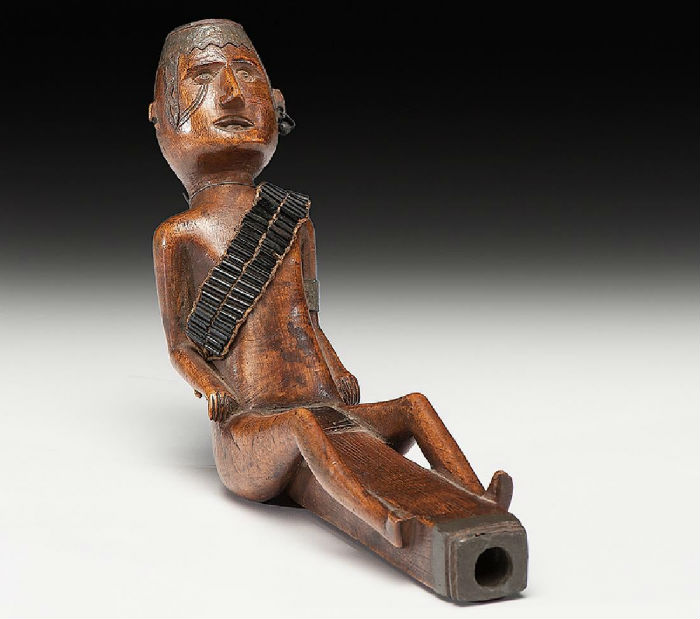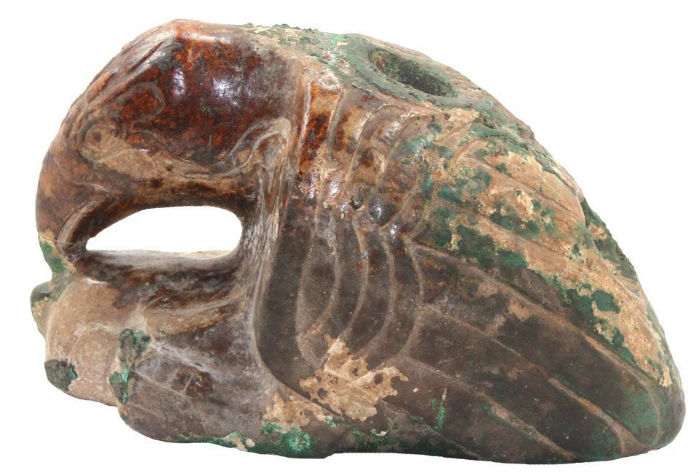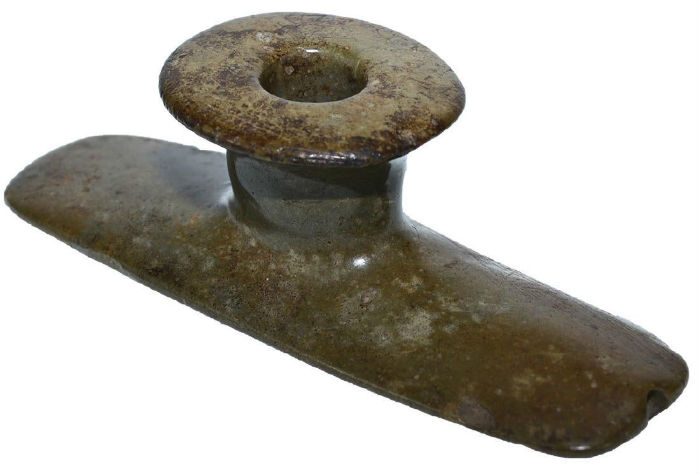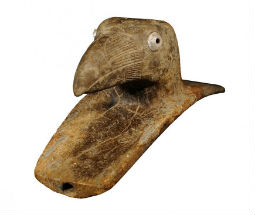
NEW YORK – Pipes have long been important objects to Native Americans for communicating with the spirit world, giving thanks, offering blessings and asking for basic needs to be met. They can range from simple and functional by merely affixing a stone bowl to a wooden stem to highly ornate works, carved and embellished. The length of the pipe also had meaning and signified how the pipe was used.
Today, collectors seek to acquire authentic examples of these artistic and historic objects while paying heed to cultural patrimony issues. Ethically minded collectors will avoid objects having a ritual or ceremonial use with deep cultural significance to the tribes that created them.
There is greater awareness today of the impact of colonialism on museum collections, which is something collectors may have to wrest with when buying. All over the world, institutions are facing pressure to return to indigenous peoples objects said to have been acquired improperly.
Highly coveted are the early pipes from the Western Great Lakes region, Great Plains and the Northwest Coast. The most desirable examples date from the mid-18th century to mid-to-late 19th century, but in recent decades Native American artists have been crafting elegant pipes as a business. These have long been sold at tourist hotspots or Native American art shows but today many artists also maintain online stores.
“There are many different styles of pipes, which means there are a variety of reasons certain pipes are more collectible than others,” said Danica M. Farnand, director of the American Indian Art Department at Cowan’s Auctions in Cincinnati, Ohio. “Generally speaking, pipes carved or decorated with figures, animal or human, tend to catch collectors’ eyes.”

Most pipes are made of catlinite, a red stone quarried in Minnesota, but one also finds pipes made of wood, antler horn or bone, argillite, steatite, decorated with lead or pewter inlay.
Catlinite was a popular material in the Plains. The Plains Indian Museum in Cody, Wyoming, features several choice examples of catlinite pipes in its collection. Some have carved representations of people and animals and others feature intricate lead inlay designs. This distinctive red stone (aka pipestone) named for artist George Catlin is not without controversy, though, as the Sioux tribe lost its land to the federal government in the 1850s.

The vast majority of pipes were personal possessions, and more often than not, come without notable history. Exceptions exist, however. A private collector bid on and won at a May 2018 auction for $40,000 for a catlinite pipe that had a paper label noting that it was “gifted” and had once belonged to Mdewakanton Dakota Chief White Dog. He and 37 other Dakota members were executed by hanging as a result of the U.S.-Dakota War of 1862. The collector returned the pipe to the tribe.

For the Native Americans who used pipes, each piece has unique symbolism. According to the Mikmaw Spirit website, the bowl of the pipe signifies woman and the stem of the pipe signifies man. “Joining the pipe symbolizes a union and a balance between male and female aspects of the world,” the website notes.
Pipes were mostly straight tubular objects but at some point, their shape evolved. Effigy pipes, in particular, are mostly designed with an elbow joint in the shape of an “L” or a “T.” An effigy pipe is a ceremonial pipe with a figure on it: often animals, sometimes people. In Ohio, for example, “the remarkable animal effigy platform pipes of the Hopewell culture are among the most delicate and naturalistic of these sculpted effigies,” according to the Ohio History Central website. Animals motifs often represented animals that were important to the pipe owner or the Native American tribe the pipe that created it. Animals were spiritually important as well as providing basic necessities such as food and clothing.

Collected for their historical importance and aesthetic beauty, Native American pipes can bring big money, such as this Eastern woodlands pipe that sold at Cowan’s Auctions LLC in September 2017 for $132,000, including the buyer’s premium. Rare effigy pipes have brought even more.
New collectors can find a variety of pipes, especially modern-era artisan-made pipes at accessible price points. “Pipes can be very sculptural works so the best advice I can give is to always buy what you like and what appeals to you,” Farnand said.


